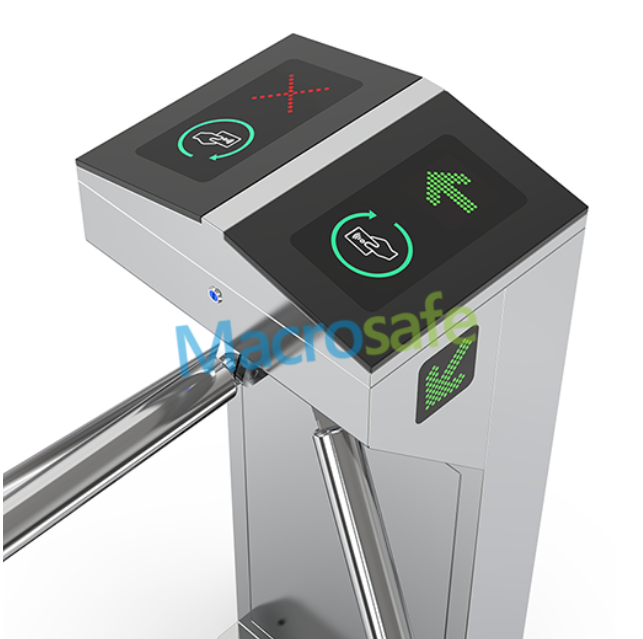
Turnstile gates play a crucial role in access control systems, and card readers are an essential component of these gates. Card readers allow for seamless identification and authentication of individuals seeking access. In this article, we will explore the different types of card readers used in turnstile gates, including magnetic stripe readers, proximity readers, smart card readers, and biometric readers. Understanding these various card reader technologies will help organizations choose the most suitable option for their specific security needs.
1. Magnetic Stripe Readers: Traditional and Reliable
Magnetic stripe readers have been widely used in access control systems for decades. These readers rely on magnetic strips embedded on access cards, which contain encoded data. When a card is swiped or inserted into the reader, the magnetic stripe reader reads the information encoded on the magnetic strip. This data is then processed and validated against the access control system’s database to determine the cardholder’s authorization. Magnetic stripe readers are a popular choice due to their reliability, cost-effectiveness, and compatibility with existing access cards.
2. Proximity Readers: Contactless Convenience
Proximity readers, also known as RFID (Radio Frequency Identification) readers, offer contactless access control. These readers use radio frequency technology to communicate with access cards that have embedded RFID tags. When an individual holds their access card within close proximity to the reader, the reader emits a low-power radio signal that activates the RFID tag. The RFID tag then transmits the card’s unique identification data back to the reader, allowing for quick verification. Proximity readers provide contactless convenience, reducing wear and tear on access cards and offering a user-friendly experience.
3. Smart Card Readers: Enhanced Security and Storage Capability
Smart card readers are designed to read and interact with smart cards, which contain an embedded microchip. These microchips store more data than magnetic stripes or RFID tags and can perform cryptographic functions, enhancing security measures. Smart cards readers communicate with the microchip on the card, validating the cardholder’s credentials and accessing the stored information. The advanced security features and increased storage capacity of smart cards make them ideal for applications requiring high levels of security, such as government facilities or confidential corporate environments.
4. Biometric Readers: Unparalleled Identification Accuracy
Biometric readers are a cutting-edge technology that uses unique physical or behavioral attributes to verify an individual’s identity. Turnstile gate equipped with biometric readers can authenticate individuals based on fingerprints, facial recognition, iris scans, or even voice recognition. These readers capture the biometric information of users and compare it against pre-registered data in the access control system’s database. Biometric readers provide unparalleled identification accuracy, reducing the risk of fraudulent access attempts by ensuring that only the authorized user can gain entry.
5. Selecting the Right Card Reader for Your Needs
When choosing the most suitable card reader for turnstile gate, several factors should be considered. These include the required level of security, the number of users, the installation environment, and the integration capabilities with existing systems. Understanding the advantages and limitations of each card reader type is crucial for making an informed decision.
Conclusion:
In access control systems, card readers are integral to the functionality and security of turnstile gates. Whether opting for magnetic stripe readers, proximity readers, smart card readers, or biometric readers, each card reader technology offers unique features and benefits. Magnetic stripe readers are reliable and cost-effective, proximity readers increase convenience and reduce physical wear, smart card readers provide enhanced security and storage capabilities, while biometric readers offer unparalleled identification accuracy. By carefully evaluating the requirements and preferences, organizations can select the most appropriate card reader technology that aligns with their security objectives, ultimately creating a robust and efficient access control system.



